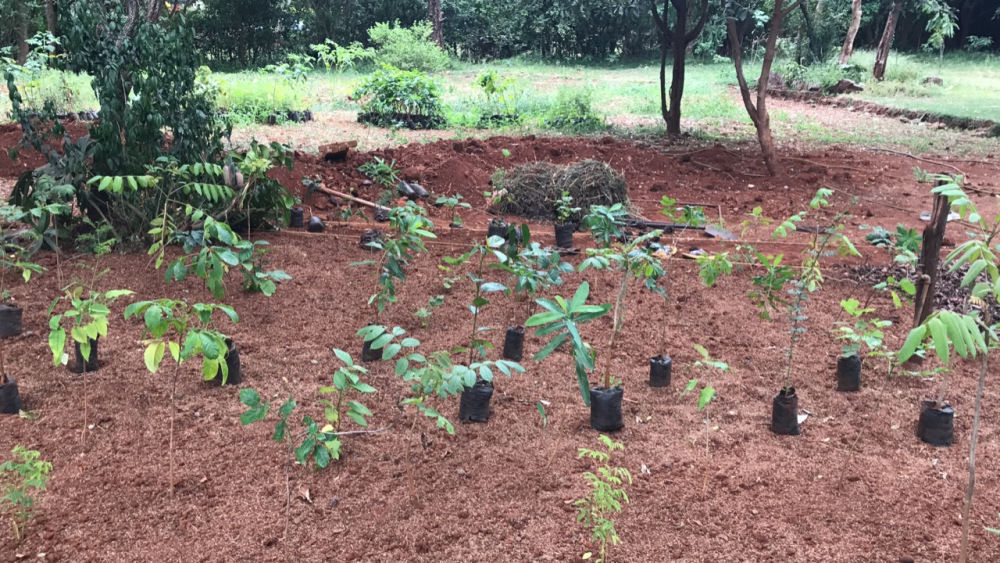What we are doing to the forests of the world is but a mirror reflection of what we are doing to ourselves.
– Mahatma Gandhi
The Miyawaki Forest is an ecosystem set up in an area of 23,000 square feet in the heart of Chennai, along the banks of Cooum. The Miyawaki Forest contains 2,020 young trees, shrubs, and creepers. Apart from beautiful beaches, Kolli hills, Nettukuppam, and a long list of amazing things to offer, Chennai has decided to add another distinctive feature to it
The mini forest or termed as Miyawaki Forest is developed with the proven ‘Miyawaki Method’. The method was developed by a Japenese botanist, Akira Miyawaki. It is a practice of restoring lands with natural forests surrounded with species native to the land. This method has been actively practiced in Japan since the early 90s and started spreading globally.
In India, cities like Delhi, Bengaluru and Hyderabad already consist the famed Miyawaki forests.
The forest is made on a site that was formerly deemed as a garbage vulnerable point in Kotturpuram. The Greater Chennai Corporation’s (GCC) Regional Deputy Minister, Alby John Varghese said that the forest at Kotturpuram is the first of many. By the end of 2020, GCC plans on developing 10 such forests in the south Chennai region. Other such projects are underway in the north and central regions of the city as well.
Miyawaki forest in Chennai
Miyawaki forest models are being developed in two other areas in Chennai, one in an apartment complex in Valasaravakkam and another in Mugalivakkam. An NGO named Trees Trust is helping with the project in Valasaravakkam. Another NGO namely, Thuvakkam is helping with the project in Mugalivakkam.
The GCC has spent around Rs 15 lakh in the first project, the biggest Miyawaki forest will be made in Perungudi in an area of 10,000 square feet. For this project Say Trees, a Bengaluru based organisation will work with GCC. Say Trees plans on spending Rs 200 per tree in the project.
Mr. Alby stated, “Apart from providing beautiful vistas, they also help bring down the heat island effect in areas with no green cover. These are incidental advantages.”
What is the Miyawaki Method ?
The method developed and conceptualised by Japanese Akira Miyawaki helps to build native and dense forests. The approach is supposed to ensure that the plant growth is 10 times faster and the resulting plantation is 30 times denser than usual. The method involves planting dozens of native species in the same area. According to Miyawaki, the area becomes maintenance free after the first three years.
A mini forest can be created in a house too by this method.
The conventional methods used for a creation of forest requires 200- 300 years of time normally. The Miyawaki methods require 20-30 years.
The concerns related to the forest
Miyawaki forest lacks medicinal properties and the ability to bring rain, something which conventionally grown forests can do. Such fast-growing plantations are actually wood lots. Wood lots are a parcel of a woodland or forest capable of small-scale production of forest products such as wood fuel, sap for maple syrup, sawlogs, and pulpwood as well as recreational uses like bird watching, bushwalking, and wildflower appreciation. Therefore they cannot be termed as forests.
Multiple environmentalists have been questioning the efficiency of the method. According to them, the accelerated growth of trees and claims of matching the complex ecosystems of conventional forests needs more research and solid proofs.
The mini forests do help in enhancing the greenery of the area and generation of optimism. But forcing plants to photosynthesise faster is not a good idea according to the experts. Also, this method cannot be used to justify the cutting of trees and forests.
Suresh Hablikar, environmentalist and founder of Eco-Watch, is not a supporter of the Miyawaki method. According to him, the method was started by the Japanese considering the climate in Japan and the regular occurrence of natural calamities like earthquakes. But this method is not good for a tropical country like India.

